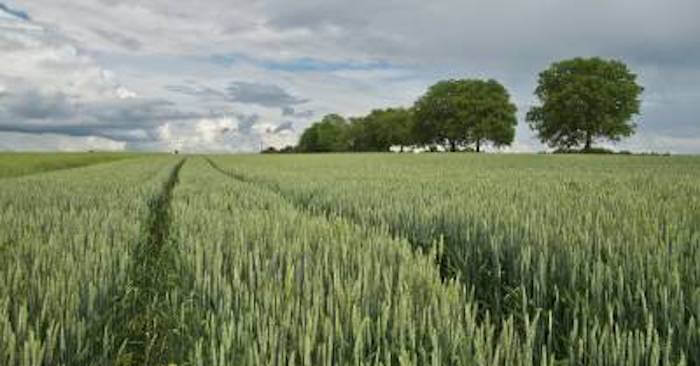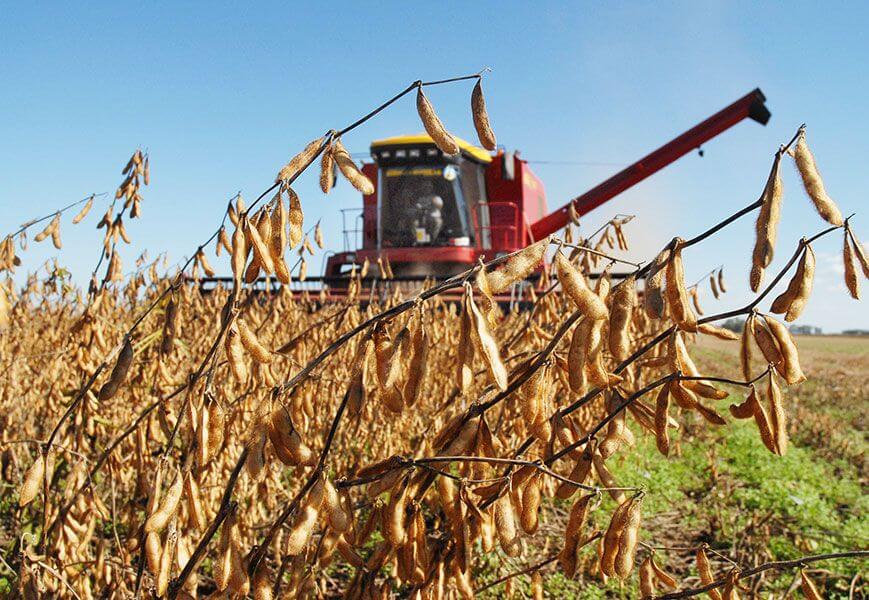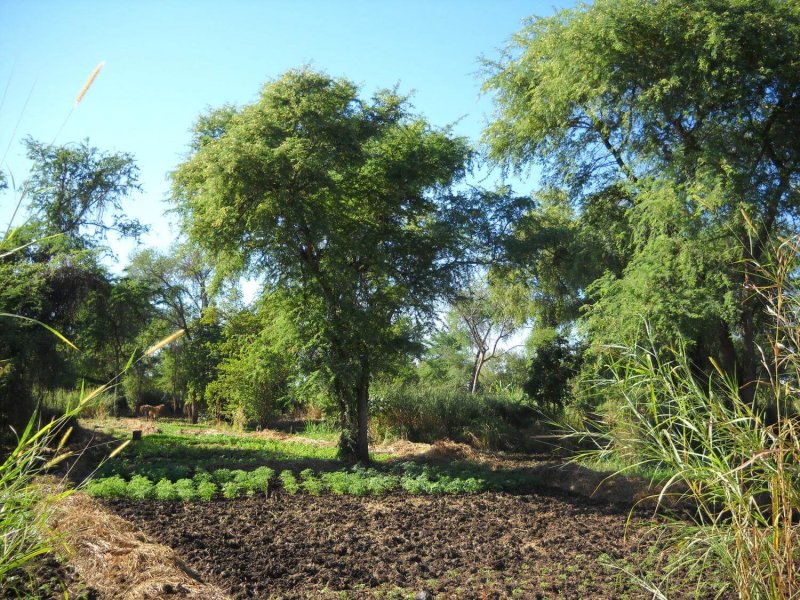While these practices have positive soil health benefits, efforts to increase agricultural soil carbon sequestration likely don’t have nearly the level of expected climate benefits. Such poor carbon accounting means that corporations, governments, or individuals seeking to offset their greenhouse gas (GHG) emissions through regenerative agriculture are fooling themselves and the general public.
To be fair, soil carbon sequestration has great potential, at least in theory. If farmers expanded their use of cover crops to all 88 million hectares of US primary cropland, it would cut total emissions from US agricultural production by about a sixth (~100 million metric tons [MMT] CO2e/year). Similarly, planting trees among row crops — a practice commonly called alley cropping — on 10% of US cropland could sequester up to 82 MMT CO2e/year.
Emerging frontier technologies may also make soil carbon sequestration even more attractive in the future. Researchers at the Salk Institute in San Diego are working on genetically engineering the six most common row crops and the three most common cover crops to increase the level of carbon transferred from root systems to soil. If used globally, these high carbon-input crops, according to Salk researchers, could help sequester between a quarter and a half of all annual human emissions.
But any mitigation through carbon capture — no matter if through reforestation, direct air capture systems, or soil carbon sequestration — should meet the standards of carbon accounting systems and carbon offset programs. That is, the sequestered carbon should be permanent and measurable, mitigation efforts should account for inadvertently increased emissions elsewhere, and organizations shouldn’t count mitigation that would have occurred in the absence of their efforts.

Current efforts to sequester carbon by expanding regenerative farming practices rarely meet these standards and therefore overestimate the amount of carbon sequestered. In other words, an estimated one ton of CO2 sequestered in agricultural soils is not the same as an emissions reduction of one ton of CO2. In fact, some types of soil carbon sequestration efforts actually risk increasing emissions. Companies and other organizations should acknowledge and address this in their GHG emissions reporting and climate efforts.
The uncertain benefits of carbon farming
Permanence is among the greatest liabilities of combating climate change through regenerative agriculture, unlike sequestering CO2 in geological storage, for instance. While soil carbon sequestration can, in theory, be permanent, it often is not, as the carbon will be released again if the farmland is later developed — a heightened concern for farms in areas of rapid urban expansion. Some practices also produce especially vulnerable carbon sequestration. The carbon benefits of no-till farming, for instance, mostly evaporate when the farmer decides to till again, which happens on an estimated 30% of “no-till” farms. Some carbon from soils may also be released as global temperatures, and thus soils, warm.
As with carbon farming practices, permanence is also an issue for set-aside programs like the USDA’s Conservation Reserve Program (CRP), which pays farmers to let areas of their working land go fallow. While this allows for previously cropped fields to grow out without tillage or any practice that would limit carbon sequestration, any sequestered carbon will be lost when these plots of land return to agricultural use, as often happens when CRP contracts expire , especially in years of high crop prices. Between 2013 and 2016, just over half of expiring CRP acreage was returned to crop or animal production, whereas only 36% re-entered the program.

Worse, carbon farming practices can even increase emissions indirectly. This is the problem of carbon “leakage.” Because some of these practices can decrease crop yields, they can lead to the expansion of farmland elsewhere, which converts valuable wildlife habitat to farmland and generates emissions, potentially negating the original carbon sequestration benefits. Take the prominent example of Amazonian forest land being transitioned to soybean production — even if regenerative practices were used on that farmland, the initial emissions from the land-use change would require decades to be offset.
While some carbon farming practices increase yields, like cover cropping, leakage should be a major concern for practices — like perennial cropping, temporary grazing, or alley cropping — that reduce them.
Agricultural soil carbon sequestration also has a serious measurement issue. Despite having the technologies capable of measuring soil carbon in specific sites, the cost of measurement can be prohibitive for farmers to participate in carbon sequestration programs. The amount of money that many programs pay doesn’t cover both the cost of measurement and the other costs — for seeds, equipment etc. — that farmers face. In addition, there is little consensus on how best to measure sequestration. A change in farming practices can lead to different rates of sequestration over time, with sequestration slowing and even ending as soil carbon levels reach a saturation point. When deciding how much to pay a farmer to sequester carbon, should the change in soil carbon be measured over 1 year? 5 years? 20 years? There’s no one right answer.
But whatever benefits the expansion of carbon farming practices do have shouldn’t necessarily be attributed to the new corporate or public sector initiatives that claim credit for them, since farmers might have shifted their practices and sequestered carbon even without the initiatives. That is, the sequestration is not always additional. Generally, rates of additionality depend on the upfront cost and long-run economic benefit of any given practice, in addition to how programs encouraging farmers to adopt the practices are designed. For example, when USDA programs pay farmers to adopt cover crops — a high upfront cost practice — only an estimated 20% of those farmers would have adopted the practice without the payment. On the other hand, for farmers paid to adopt conservation tillage or no-till practices, almost 75% would have done so without the payment.
This mixed rate of additionality becomes an issue when payments to farmers are framed as drivers of negative emissions. Specifically, when a carbon offset payment for no-till practices goes to a farmer who already planned to utilize that practice, the actual impact on atmospheric carbon is null.
Principles for agricultural offsets
We propose three principles for organizations interested in lowering their carbon footprint through soil carbon sequestration, to ensure that their efforts have meaningful climate benefits on the scale that they advertise.

First, we should not incentivize agricultural practices that reduce yields and lead to land-use change with outsized GHG, habitat and other environmental impacts. Instead, indirect land-use change should always be assessed — and assessed conservatively — when incentivizing agricultural practices. While there are some cases where the carbon sequestered from a yield-reducing practice, such as planting trees on marginal farm land, is greater than the emissions from the resulting land-use change, these are the exception that proves the rule. If we are not attuned to yield-land use tradeoffs, leakage-related emissions risk rendering moot carbon farming’s climate benefits.
Second, organizations interested in net-zero carbon emissions ought to separately report total GHG emissions, soil carbon sequestration, and permanent carbon sequestration & storage (e.g. through direct air capture and geologic storage) to the public, instead of merely reporting a single “net” emissions value. Differentiated reporting would acknowledge the climate mitigation potential of soil sequestration while recognizing the limited permanence of soil carbon sequestration compared to geological storage, and avoiding falsely equating sequestration with true emissions reductions.
Third, organizations should overshoot their desired emissions offsets with soil carbon sequestration — perhaps 3 or 4 times as much — since the impact is so uncertain. Certainly, organizations should be commended for attempting to offset all their emissions through soil carbon sequestration, but they should only be considered “carbon neutral” if their initiatives are calculated to sequester much more carbon than is necessary on paper to zero the ledger.
By implication, soil carbon sequestration should be treated very carefully and critically in any carbon market such as the California Cap-and-Trade Program. Given the large and compounding uncertainties — due to measurement, leakage, permanence and additionality issues — agricultural carbon sequestration should potentially even be excluded from such markets.
Ultimately, we should neither uncritically support soil carbon sequestration nor turn our backs on the massive potential that soil carbon sequestering management practices might have on carbon levels in the atmosphere. Instead, we must acknowledge the limitations of soil carbon sequestration. If corporations are truly interested in carbon sequestration, perhaps their dollars would be better spent on addressing the limitations, such as through research to improve the certainty and effectiveness of carbon farming practices.
Alex Smith is a Food and Agriculture Analyst at The Breakthrough Institute (THEBTI). Follow him on Twitter @alexjmssmith
Dan Blaustein-Rejto is the Associate Director of the Food and Agriculture program at Breakthrough. Follow him on Twitter @danrejto
This article originally ran at The Breakthrough Institute and has been republished here with permission. Follow them on Twitter @TheBTI































